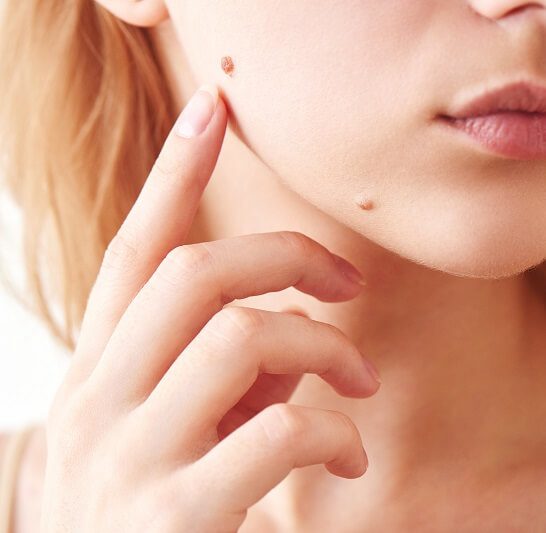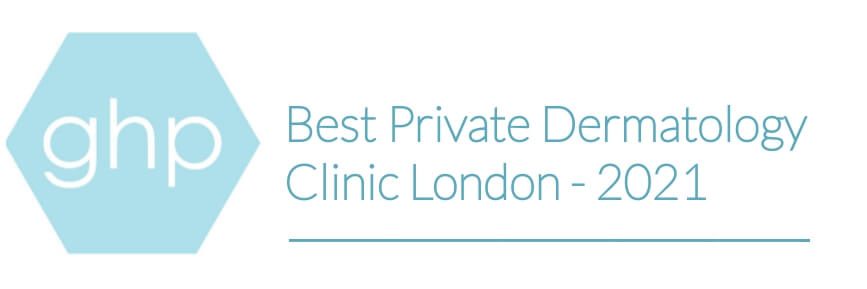MOLE Removal TREATMENT FROM DERMCONSULT
Do you have a mole that is concerning you or causing inconvenience? Are you worried about developing skin cancer, or simply just unsure? Want to know more about the type of mole you have?
At Derm Consult in London, we offer bespoke consultations and mole removal treatment. If you have any concerns, get in touch now to see how we can help!
Book A Consultation
LEARN MORE ABOUT MOLES
WHAT ARE MOLES?
Moles, also known as melanocytic naevi or beauty marks, are normal skin growths that can appear anywhere on your body.
when melanocytes (pigment-producing cells) grow in groups. A mole will be, for the most part, benign (harmless), but there is always a small risk of becoming a melanoma, which is a type of skin cancer.
HOW IS IT DIAGNOSED?
Moles have a typical appearance and can be diagnosed by the naked eye and an instrument called a dermatoscope to inspect a mole more closely. If there is uncertainty regarding the diagnosis, particularly if the mole has some features of melanoma or dysplasia, it may be removed for examination under a microscope.
Types of moles
Generally, we categorise moles into two main types:
- Common Nevi (or benign nevi) – common skin growths that appear on most people. They are usually coloured pink, tan, or brown, have a clear edge, and are no bigger than 5 mm wide.
- Dysplastic nevi – atypical moles, typically bigger than common nevi. They have less regular edges and may have a mixture of different colours. Studies show that, the more dysplastic nevi you have, the risk of developing melanoma is also higher.
If you suspect one of your moles is abnormal, get in touch and we’ll get it checked out for you. If there is any reason for concern, mole removal treatment might be recommended.

Expertise
Before & After Treatment
Our Fees
We’re Always Transparent About Cost
How are moles diagnosed?
Moles can be diagnosed either by the naked eye or by examining them closer with an instrument called dermatoscope. If there is uncertainty regarding the diagnosis, particularly if the mole has some features of melanoma or dysplasia, it may be removed for examination under a microscope.
What to look out for - the ABCDE full body mole check
- Asymmetrical: Does the mole have an irregular shape without two matching halves?
- Border: Does the mole have a jagged, uneven border?
- Colours: Does the mole have a mix of more than two colours?
- Diameter: Is the mole larger than 6mm in diameter?
- Evolution: Has your mole changed in size and shape over time?
Mole removal treatment - what is it?
At DermConsult, we are highly experienced in treating and removing moles, and offer a range of skin mole treatment options as well as our digital mole mapping service.
Benign moles can safely be left alone unless they are a cosmetic concern or are located in an area where they are frequently caught and inflamed. If any mole shows any suspicious signs, we recommend full removal, so it can be checked and diagnosed properly in the laboratory.
There are a few different mole removal methods. During your bespoke consultation, we will be able to discuss your options following your initial mole inspection or digital mole mapping appointment.
Choose the Derm Consult private clinic for your skin mole treatment
By choosing Derm Consult, you’ll always have access to:
- Consultant-run services, available at our clinic at Harley Street (Central London).
- Highly-trained professionals experienced in mole removal, as well as treatment for melanoma moles
- Easy monitoring, perfect if you have many moles or have had skin cancer in the past.
- Annual reviews to detect new or changing moles
To find out more about our mole treatments, or to book a digital mole mapping appointment, get in touch with our friendly and professional team now!

